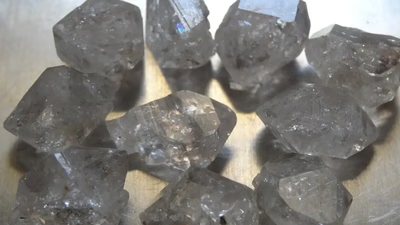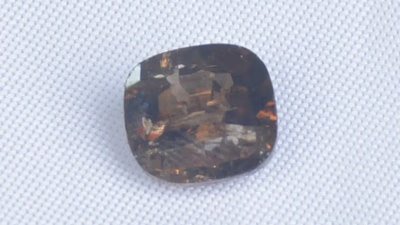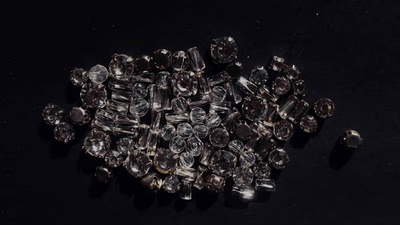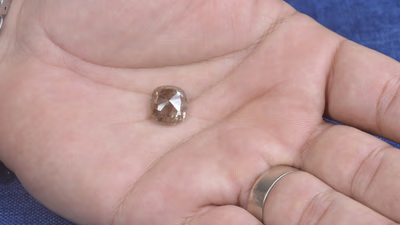
Explore Middle East trade platforms for diamonds and commodities.
The United States is the largest consumer market for diamonds, representing a significant portion of global diamond demand. The country has a robust diamond retail sector, with major cities like New York and Los Angeles hosting numerous high-end jewelry stores. The United States also has diamond cutting and polishing facilities, but its diamond supply primarily relies on imports. India is a major player in both the diamond supply and demand markets. It is the world's largest diamond cutting and polishing center, with cities like Surat and Mumbai being major hubs for diamond trade. India's domestic demand for diamonds is also substantial, with a growing middle class and a strong cultural affinity for diamond jewelry.
The United Arab Emirates, specifically Dubai, has become a prominent diamond trading and consumer hub. Dubai is known for its diamond trading centers, such as the Dubai Diamond Exchange, and its luxurious jewelry retail sector. The country's strategic location, business-friendly environment, and well-developed infrastructure have contributed to its growing importance in the diamond market.
The largest diamond producing countries are the Netherlands, Russia, America, India, and Belgium. Among these countries, the best cuts belong to Belgium and Russia, which have many fans around the world. The main offices of all diamond or diamond shareholders are in Belgium, which has the most buyers from all over the world. Later, in New York and London stock exchange, there were many transactions. Diamonds of the Belgian stock exchange found out a way around the world. Part of the product through direct purchases and much of it from the Belgian branch offices are exported around the world.
But it is not the European countries, but on the product, they bought the business and the high volume of business. Apart from America, countries in the oil-rich capital of the Arabic countries, most consumers are in the form of jewelry as brilliant. India and Thailand are also pioneers in diamond consumption. Most of the diamonds consumed in these countries are small and small. In Asia, except for India, Saudi Arabia, UAE, Oman, and Lebanon in the future, with consumption.
Iran's share of the diamond trade is very low. It can be said that buying diamonds over one carat in total is zero and the maximum buy of the diamonds has been done very finely. According to these conditions, Iran is in sixth or seventh place among Asian countries in terms of consumption. At present, with the recession in the market, it can be said that Iran is the twelfth in the world, while until a few years ago, it was in sixth place in the world.
China has emerged as a significant diamond market in recent years. The country's rising middle class and increasing disposable income have fueled the demand for luxury goods, including diamonds. Major cities like Shanghai and Beijing have thriving diamond retail sectors. China also has its own diamond cutting and polishing industry, although it still relies on imports to meet its demand. Belgium, particularly the city of Antwerp, is known as the diamond trading capital of the world. It plays a crucial role in diamond supply and demand through its diamond exchanges and trading houses. Antwerp is a major diamond cutting and polishing center, and it serves as a key link in the global diamond supply chain.
-

The leading diamond-producing countries are Russia, Botswana, and Canada, with significant contributions from South Africa, Angola, and Namibia. Russia dominates the market with its diamond mining concentrated in the Sakha Republic, primarily managed by Alrosa. Botswana"s diamond industry is largely driven by the Debswana Diamond Company, a collaboration between the government and De Beers. Canada has become a notable player in recent years, with major operations in the Northwest Territories led by Dominion Diamond Mines. These nations possess substantial diamond reserves and established mining sectors that influence global trade dynamics. The article also highlights the historical context of diamonds as valuable commodities and their role in jewelry markets worldwide. While Africa remains a key region for diamond extraction, issues such as low wages and discrimination among local workers persist. The quality of diamonds varies across regions, with Canadian diamonds recognized for ethical practices and high standards.
Australia was once a major contributor through its Argyle mine but has seen production decline since its closure in 2020. "
-

No significant diamond mines have been discovered in West Asia, particularly in the Middle East, due to unfavorable geological conditions. The region lacks the necessary formations for diamond deposits, which are typically found in areas like Africa and Russia. Recent findings of diamond particles in Iran"s Sistan and Baluchestan province have sparked interest, but experts remain skeptical about the potential for large-scale mining operations. While some believe there may be undiscovered reserves due to geological similarities with neighboring Afghanistan, extensive exploration has yet to occur. The UAE has emerged as a key player in the diamond trade, focusing on trading and retail rather than mining. Despite the absence of local mines, the global diamond market remains economically significant, with diamonds valued higher than other gemstones and precious metals. "
-

The United States leads global diamond consumption, with major retail hubs in cities like New York and Los Angeles. While it has some cutting and polishing facilities, the U. S. primarily relies on imports for its diamond supply. India stands out as the largest diamond cutting and polishing center, with significant domestic demand driven by a growing middle class. The United Arab Emirates, particularly Dubai, has emerged as a key player in the diamond trade due to its strategic location and business-friendly environment. Major diamond-producing countries include the Netherlands, Russia, America, India, and Belgium, with Belgium recognized for its high-quality cuts and extensive trading network. Antwerp is noted as the global diamond trading capital, facilitating international transactions.
Other notable markets include China, where rising disposable incomes are increasing demand for luxury goods like diamonds. Despite a downturn in market conditions affecting countries like Iran, which has seen a decline in its consumption ranking, the overall landscape of diamond trade remains dynamic across regions.
-

The diamond market in West Asia is characterized by limited public information regarding large diamonds held by central banks and private collectors. Notable diamonds like the Darya-i-Noor, Noor-ul-Ain, and Taj-i-Mah are part of Iran"s Crown Jewels, showcasing the country"s rich history with precious gemstones. The Darya-i-Noor, weighing approximately 182 carats and known for its pale pink color, is displayed in Tehran"s Treasury of National Jewels. Saudi Arabia and the UAE also possess significant diamond collections, although specific details about individual diamonds remain scarce due to privacy concerns. Dubai has emerged as a global hub for luxury goods, including diamonds, facilitating numerous auctions and private sales. Other countries in the region, such as Kuwait and Qatar, likely have valuable collections but lack publicly available information. The dynamic nature of the diamond market means ownership can change frequently through sales or private transactions. Overall, while Iran"s collection is well-documented, other West Asian nations maintain a level of secrecy regarding their diamond holdings.
-

The diamond trade is evolving due to shifting consumer preferences, particularly among younger generations who prioritize sustainability and ethical sourcing. This trend is driving demand for lab-grown diamonds and customizable jewelry. Technological advancements in diamond synthesis are expected to further influence market dynamics, as lab-grown diamonds become more prevalent. Additionally, the importance of traceability and ethical practices in the supply chain is increasing, reflecting consumer concerns about the environmental impact of mining. Economic factors and geopolitical changes also play a significant role in the diamond economy, with fluctuations in global conditions affecting demand and prices. Iran"s potential for diamond exploration, particularly in ophiolite belts, could reshape its position in the market. The rise of emerging markets like China and India is contributing to increased luxury goods consumption, including diamonds. E-commerce is transforming retail within the industry, providing consumers with convenient access to diamonds online.
As these trends continue to develop, they will shape the future landscape of the diamond trade. "





